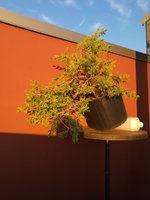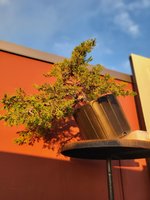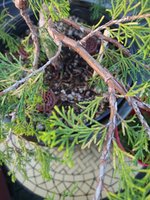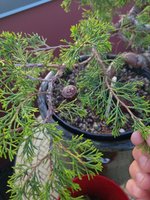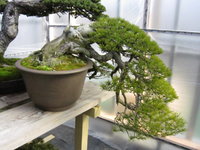Hi
@pandacular I like your shimpaku. Here on BN usually referred to as Kishu or Itoigawa.
I only have Kishu presently.
Frank's your go to guy here, and I agree with everything he's said so far except for the taller
cascade pot, which you also do not like. They're the most difficult to get the soil watered properly
and the easiest to blow or get knocked over.
I'm only responding to back up Franks input, and discourage extra work on foliage prior to repotting.
I nearly lost my cascade Spring 2018 (j.procumbens) when I repotted it the year following
a 2017 September thinning. I've had this one 15-20 yrs from a 1 gallon nursery can.

It seems to be sensitive to repotting, as I just moved it into its 1st bonsai pot this Spring made by Sara Rayner.
It had been in a wooden cascade pot I made for it a few years. It is sulking a bit again, but I intentionally
did not do much foliage work on it last year in preparation of this years repot. Then after the repot, I got
the worst spider mite infestation on all my junipers I'd ever had. Thankfully, I had left the foliage untouched last year.
There are some standard cascade pots on Etsy. More squarish than tall that would work perfectly.
I have this one
https://www.etsy.com/listing/110404...m=56c9bace&ref=search_recently_viewed-2&frs=1
8.5 x 5.5 interior, I believe. If you build one, consider teak, mahogany or at least cedar, for more than 1 or 2 years use.
Obviously, a pond basket would be similarly shaped and much cheaper. I have a kishu in one now, and it really likes it.

The pond basket has very similar measurements to the linked pot above on Etsy.
This should allow for any angle change you might be inclined to make
whether you follow through with it or not. The plastic can be cut to accommodate
any trunk(s) that the change up might trespass on the rim.
(Note: the cut rim would need to have the side below reinforced for handling sake.
Like tying a shoe with wire through the "mesh" like holes.





